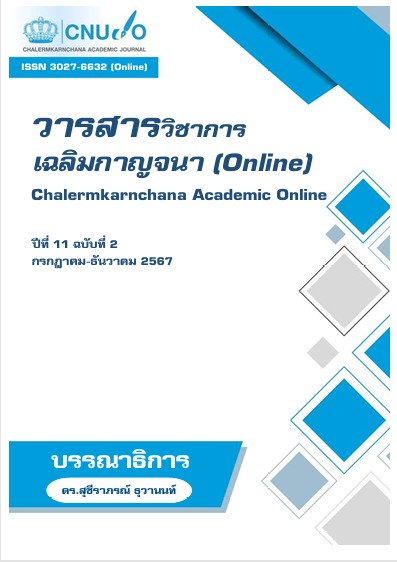Factors Influencing the Saving Behavior of Working-Age People in Thailand
Keywords:
Saving behavior, Working-age individuals, Economic factors, Psychological factors, Social factorsAbstract
This study aims to analyze the factors influencing the saving behavior of working-age individuals in Thailand, focusing on economic, psychological, and social factors. The sample consisted of 400 working-age individuals (22-60 years old), selected using Stratified Random Sampling. Data were collected through questionnaires and analyzed using descriptive statistics and inferential statistics.
The results revealed that 55% of respondents save regularly, while 30% save only occasionally. The most significant factors influencing saving behavior were saving motivation (r = 0.60, p < 0.01), income (r = 0.65, p < 0.01), and saving culture (r = 0.50, p < 0.01), whereas cost of living and debt burden had a negative impact on saving behavior (r = -0.48, -0.50, p < 0.05).
These findings align with the Life Cycle Hypothesis (Modigliani & Brumberg, 1954) and Behavioral Economics Theory (Thaler & Shefrin, 1981), which suggest that individuals with higher saving motivation and self-control are more likely to maintain regular savings, whereas those with a present bias tend to save less. Additionally, financial motivation and social environments play crucial roles in shaping saving behavior.
Recommendations from this study include promoting a saving culture at the national level, developing digital saving technologies, and enhancing financial literacy among working-age individuals to encourage better saving habits in the future.
References
Duflo, E., & Saez, E. (2003). The Role of Information and Social Interactions in Retirement
Plan Decisions: Evidence from a Randomized Experiment. Quarterly Journal of
Economics, 118(3), 815-842.
Friedman, M. (1957). A Theory of the Consumption Function. Princeton University Press.
García, M. J., Lusardi, A., & Mitchell, O. S. (2018). Financial Literacy and Financial Resilience:
Evidence from Around the World. NBER Working Paper No. 25048.
Krejcie, R. V., & Morgan, D. W. (1970). Determining Sample Size for Research Activities.
Educational and Psychological Measurement, 30(3), 607-610.
Lusardi, A., & Mitchell, O. S. (2014). The Economic Importance of Financial Literacy: Theory
and Evidence. Journal of Economic Literature, 52(1), 5-44.
Modigliani, F., & Brumberg, R. (1954). Utility Analysis and the Consumption Function: An
Interpretation of Cross-Section Data. In K. Kurihara (Ed.), Post-Keynesian Economics
(pp. 388-436). Rutgers University Press.
Shefrin, H. M., & Thaler, R. H. (1988). The Behavioral Life-Cycle Hypothesis. Economic
Inquiry, 26(4), 609-643.
Thaler, R. H., & Shefrin, H. M. (1981). An Economic Theory of Self-Control. Journal of
Political Economy, 89(2), 392-406.
ธนาคารแห่งประเทศไทย. (2565). รายงานภาวะเศรษฐกิจไทยและแนวโน้มพฤติกรรมการออม.
กรุงเทพฯ: ธนาคารแห่งประเทศไทย.
สำนักงานสถิติแห่งชาติ. (2565). รายงานการสำรวจพฤติกรรมการออมของประชากรไทย. กรุงเทพฯ:
กระทรวงดิจิทัลเพื่อเศรษฐกิจและสังคม.
Published
How to Cite
Issue
Section
License
Copyright (c) 2025 Chalermkarnchana Academic Journal

This work is licensed under a Creative Commons Attribution-NonCommercial-NoDerivatives 4.0 International License.





